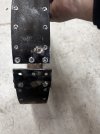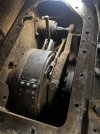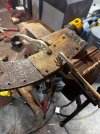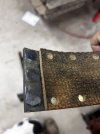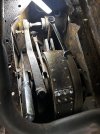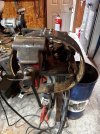Dave the pool guy
Active Member
Hello everyone so I have a 1979-ish D3 dozer that would require you to remove the steering clutches to replace the linings
What I did is two pads back from the adjuster. I cut the band and modified a bracket with three bolts to separate the brake band in the 2/2 you can pull it out, replace your linings, put it back bolt it back together no need for deconstructing the vehicle so to speak.
The reason I started this endeavor is because when I first started watching YouTube videos about how to put linings on most of the old dozers were made in section so that you could get that off. This is an experiment because I don’t have anything wrong with my clutches, and according to the service manual, it is quite an ordeal to take them out and put them back in, so I decided to go this route and can let you know details if you want them. I have tons of pictures on how I did it. It’s absolutely ridiculous to me that you would have to take the steering clutches out to do this regular maintenance item.
Wish me luck
What I did is two pads back from the adjuster. I cut the band and modified a bracket with three bolts to separate the brake band in the 2/2 you can pull it out, replace your linings, put it back bolt it back together no need for deconstructing the vehicle so to speak.
The reason I started this endeavor is because when I first started watching YouTube videos about how to put linings on most of the old dozers were made in section so that you could get that off. This is an experiment because I don’t have anything wrong with my clutches, and according to the service manual, it is quite an ordeal to take them out and put them back in, so I decided to go this route and can let you know details if you want them. I have tons of pictures on how I did it. It’s absolutely ridiculous to me that you would have to take the steering clutches out to do this regular maintenance item.
Wish me luck

